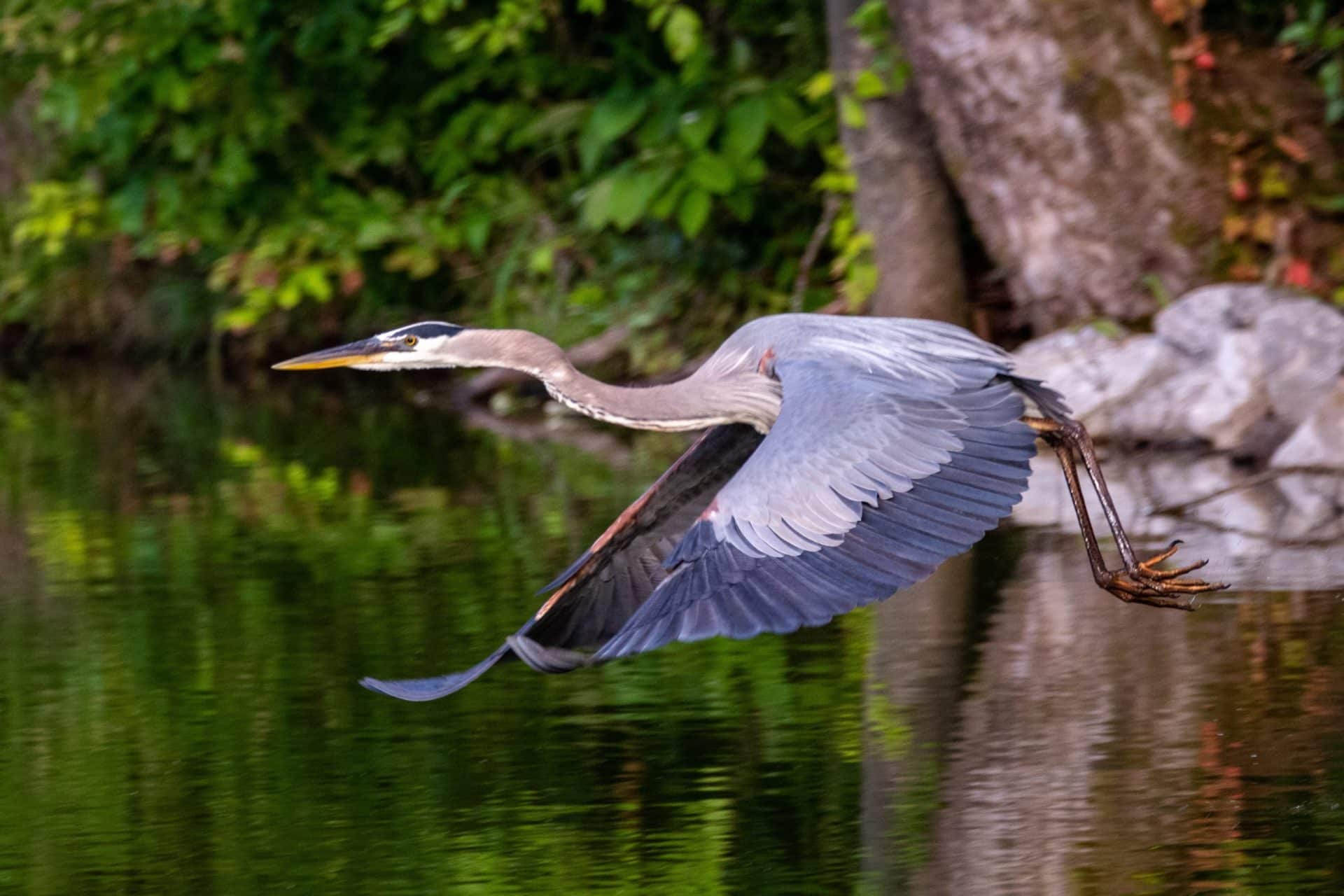Birds
Great Blue Heron
Ardea herodias

Great blue herons can be seen in almost every water habitat in Ohio in every season where unfrozen water is present. Their long specialized necks curl into S shape for a more aerodynamic flight contour and for a quick strike at prey at a distance. Despite their large size, they weigh only five to six pounds. Great blue herons have specialized powder down feathers on their chest which continually grow and fray. They comb these feathers with a fringed claw on their middle toes, using the power to remove fish slime and other oils from their feathers. They apply the powder to their under parts protecting their feathers against the slime and oils of swamps.
Great blue herons hunt alone during the day but can also hunt at night. They have a large number of rod-type photoreceptors in both eyes which help their night vision. Great blue herons are waders. They snare their prey by walking slowly, or standing still for long periods of time in water, waiting for smaller prey such as fish, amphibians, reptiles, insects to come within range of their long necks and blade-like bills. They also forage in wet grasslands and agricultural fields where they stalk frogs and mammals.
Despite hunting alone, great blue herons nest in colonies that can number several hundred pairs. Most breeding colonies are located within two to four miles of feeding areas, often in the same isolated area year to year near forested lakes and ponds. Males arrive March to April in Ohio at the colony and decide on nest spot. Nests are primarily in trees but can be on bushes, or on the ground. Nests maybe reused from year to year or rebuilt every year. Males collect most of the nest materials. They pass the materials off to the female in an elaborate courtship display. Females accept the nesting materials and weave a platform cup nest with stick, lining it with pine needles, moss, reeds, dry grass. Nest building can last from three to fourteen days. Pairs are mostly monogamous during a season. However each year they choose new partners.
Great blue heron females lay two to six pale blue eggs. Both parents incubate the eggs for 25-30 day. Both parents feed the young regurgitated food. Fledglings leave the nest around two months old, although they return to the nest to be fed by the adults for another few weeks.
According to the North American Breeding Bird Survey, Great blue heron numbers are stable and in some areas increasing. The recovery of beaver populations have created new areas of swamps and meadows suited for great blue heron foraging and nesting. However great blue heron populations’ declines have occurred in some areas where elevated chemical pollutants levels and reduced water quality are present.
Best Location to View: Buttonbush Bog, Heath Pond, Hourglass Pond
Color: Males and females blue-gray body; yellow bill; black strip over eyes
Size: 38.2–53.9"
Wingspan: 65.7–79.1"



